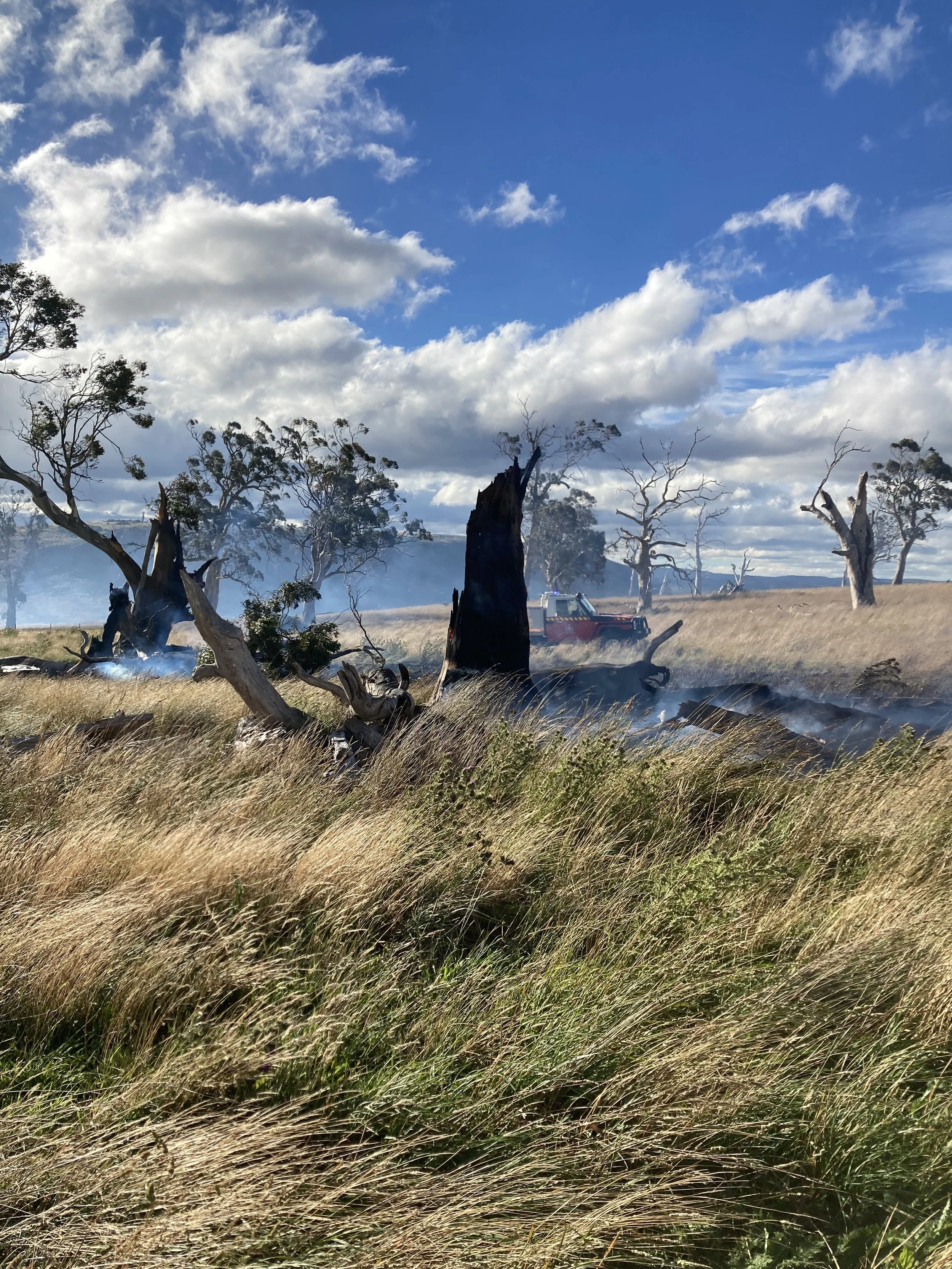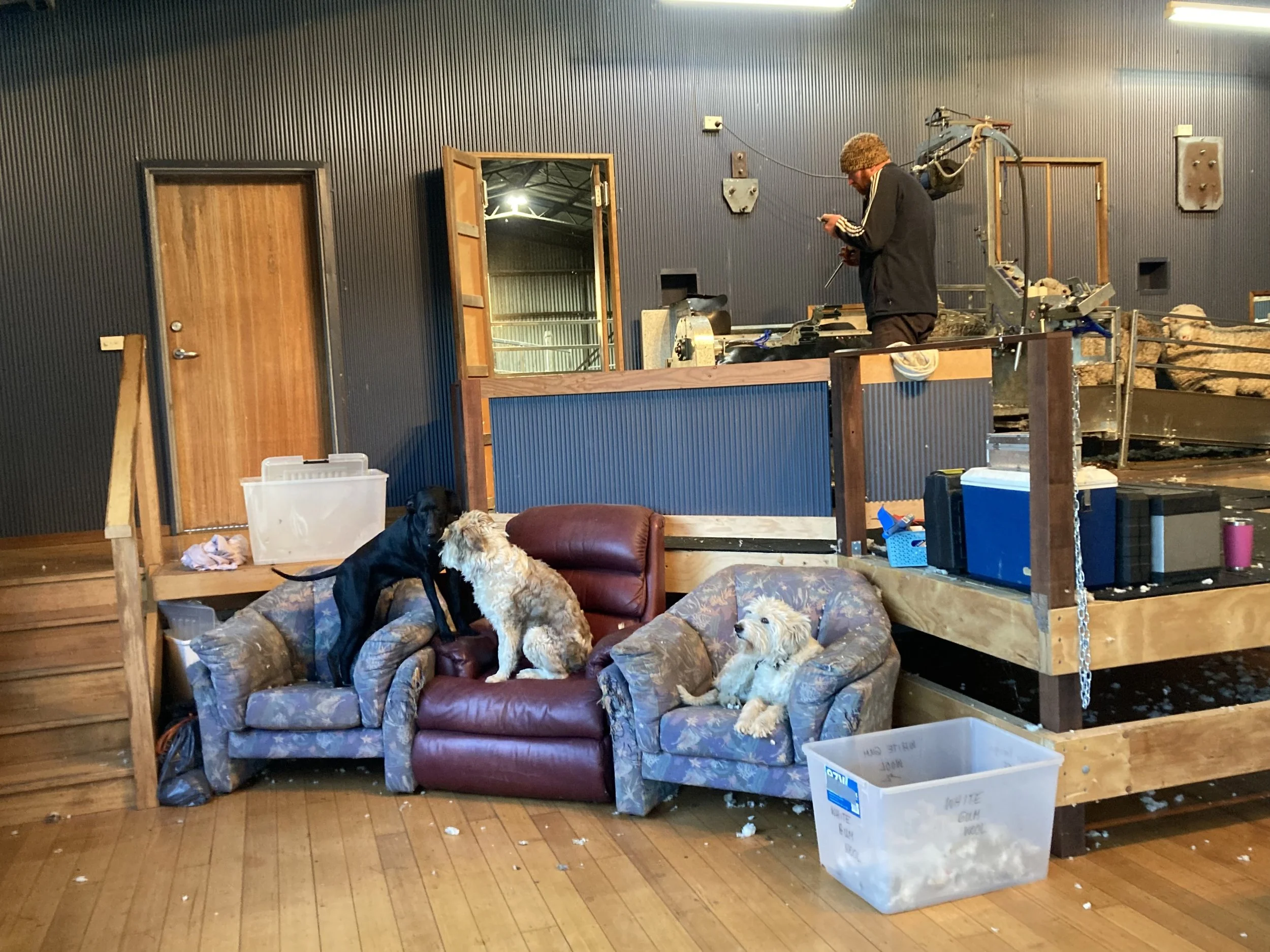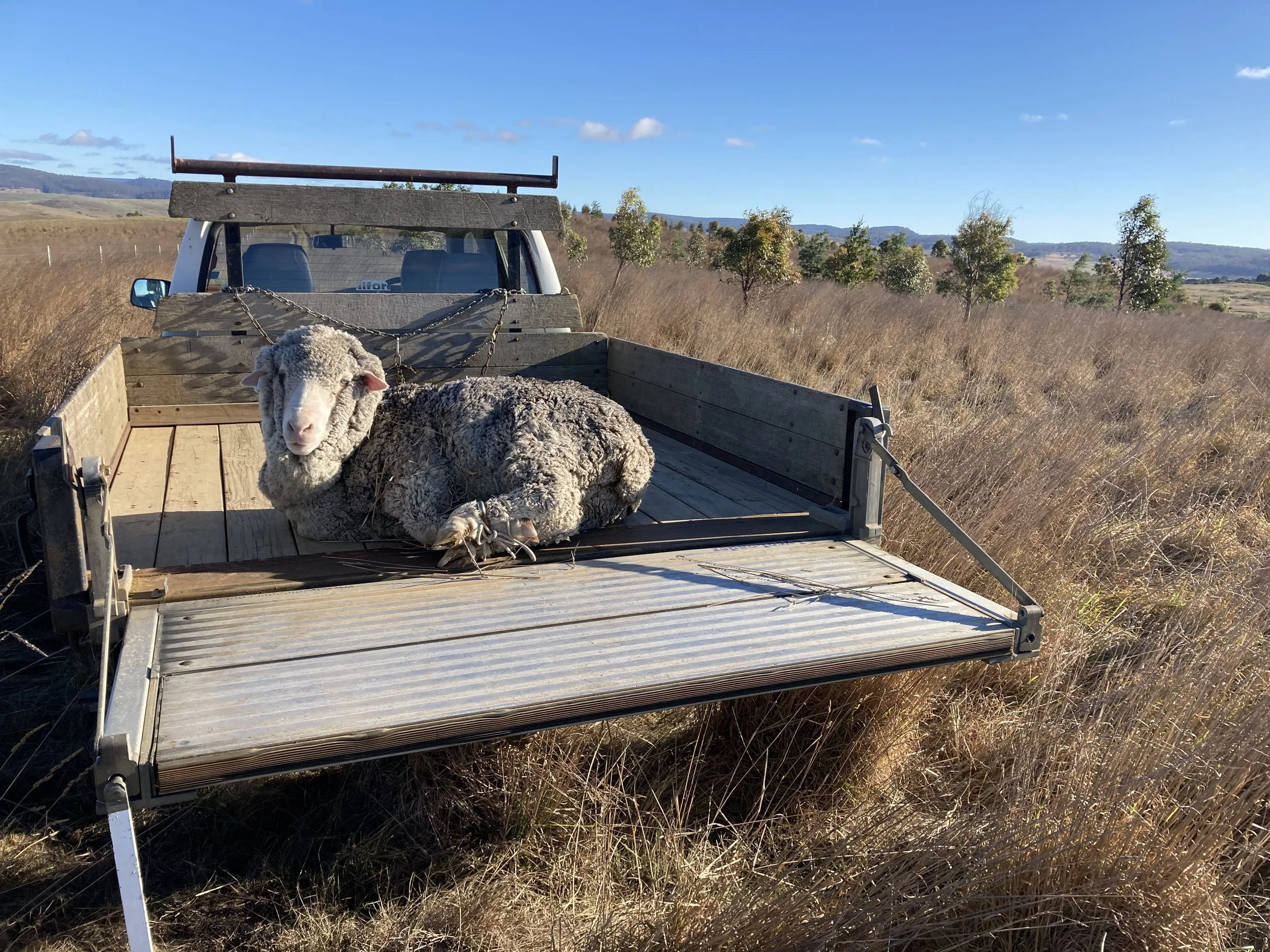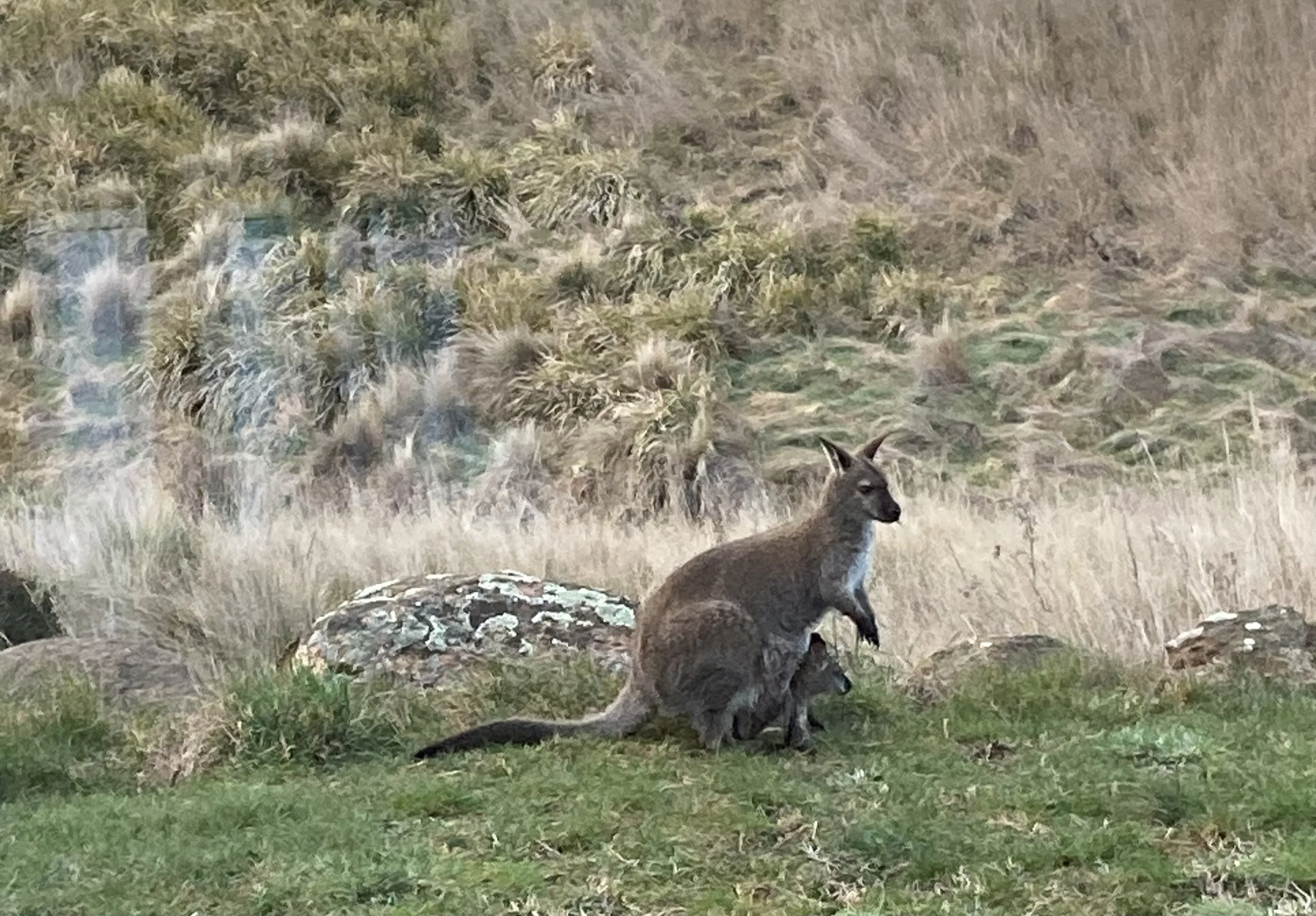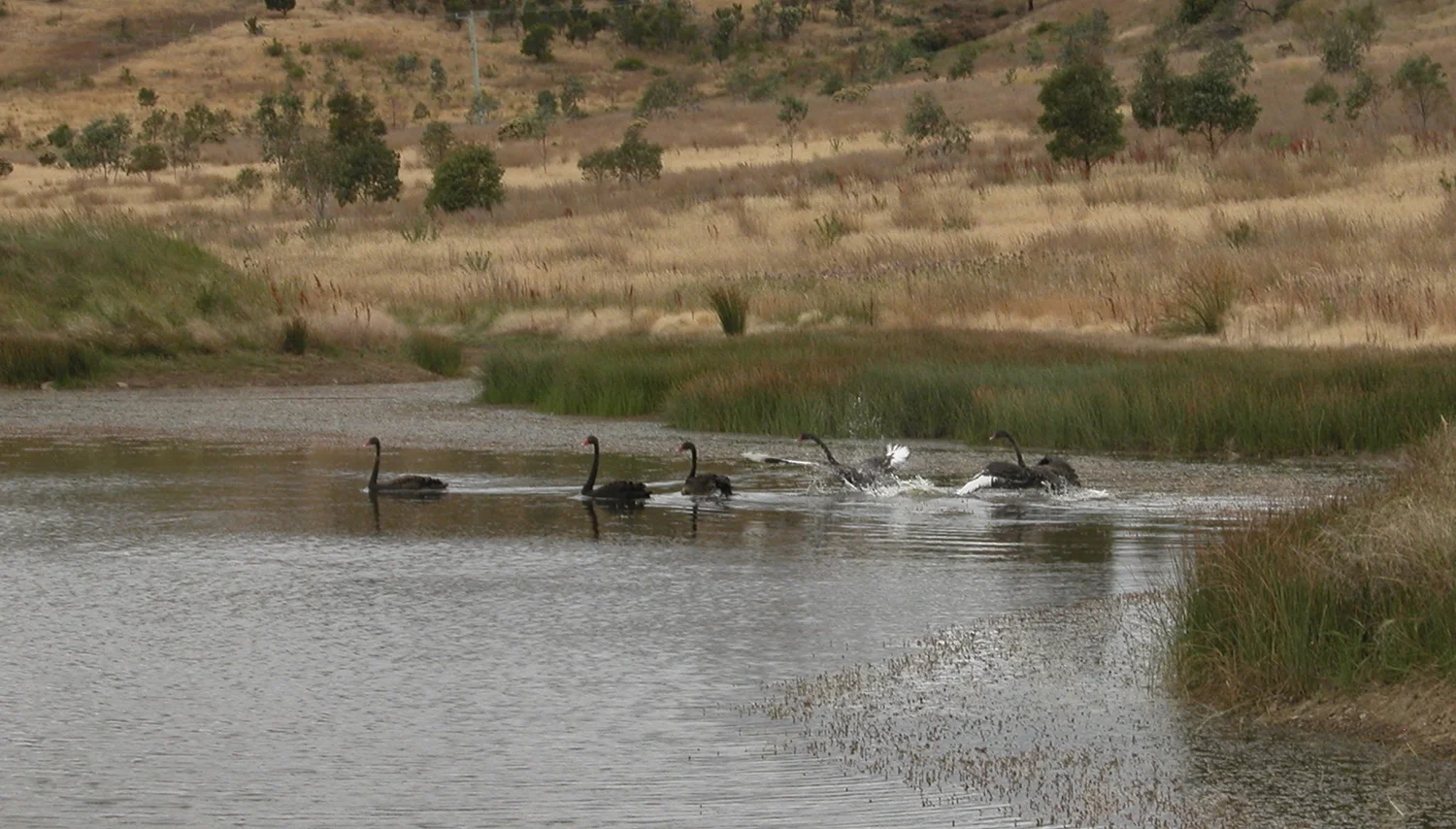Just for the last short while, I’ve felt confident enough to run my pack of working dogs using my electric Polaris ranger—the farm “buggy”. I’ve always been wary with the youngsters, but they’ve finally developed enough sense to run well away from the buggy. A few days ago we were trundling up the track through the lucerne, not far from the boundary fence, when Jax, the youngest, scared up a big black feral cat. She was more than a match for him in speed, and I watched in trepidation as they dashed away up the paddock.
The Power of the Matriarch
Had I any idea of the pivotal role she would play in my life, I would have given my lead ewe a better name. Boadicea, for instance. Or maybe Elizabeth. Or even Frances Darlene after my difficult and undeniably contrary mother. But at the time I saved her from the usual fate of 5 year-olds on most sheep properties, I only knew that she was a pretty good leader, at least at times. So she became simply “Old Leader”.
Peter's socks go to Bhutan
Last austral spring, my lovely, talented friend Anne Downie (retired woolgrower and textile craftie extraordinaire) knitted a pair of socks from White Gum Wool 4-ply for her son Peter. Peter was headed for a walking trip in Bhutan, something he’d wanted to do for years, and he was delighted with his socks. (Bhutan, by the way, is a country worth paying attention to: any place that worries more about Gross National Happiness than Gross National Product is on the right track as far as I’m concerned.)
Cosmic Intercepts
Have you noticed how sometimes the universe and your subconscious conspire to bring your attention back repeatedly to something you don’t particularly want to examine? Recently I’ve had that experience with regard to herbicides. While I’ve succeeded in keeping pesticides, chemical fertilisers and fungicides out of my management practices, spot spraying the major woody weeds (gorse, briar rose and horehound) has seemed like the only solution.
In Celebration of Indies
One of the best things about going feet-first into the yarn business, and one I didn’t anticipate at all, is getting to know and work with a wide range of talented, creative, determined independent fibre artists: indie pattern designers, hand-dyers, knitters and shop owners who are artists in their own right. I’ve been in awe of the spectrum of ability and the passion for fibre encompassed by the women I’ve met so far.
You Don't Have to Be Perfect
Fire Weather
Last Sunday, the 9th of February, we had the worst fire weather day we’ve had so far this year—38o C (100o F), gusting 60 kph (40 mph), zip in the way of humidity. Thankfully, there were no serious fires in the state, but with a fire danger rating of severe to extreme, it was a fairly nerve-wracking day. It was worse in Victoria.
Boucle is here! (and other news)
It's the Season, Silly
When I first began farming, after I realised that it was not going to be as easy as it looked from the highway, I would ask “Why?” about any number of mysteries having to do with raising sheep. Almost invariably, the answer would come back in some variation of: “It’s the season.” Why is the spear grass so bad this year? It’s the wet spring. Why are the grubs so bad this year? It’s the dry winter. Why are we having so much trouble with intestinal worms? It’s the wet summer.
The Bed of a Jedd
From my all-time favourite Dr Seuss, The Sleep Book, comes the following character:
A Jedd is in bed, and the bed of a Jedd
Is the softest of beds in the world it is said.
He makes it from pompoms he grows on his head.
And he’s sleeping right now, on the softest of fluff,
Completely exhausted from growing the stuff.
The softest of fluff—and unlike the Jedd, there’s just a bit more to it than piling up the pompoms to sleep on. In honour of all the knitters who’ve recently subscribed to Yarns, I thought I might tell you the little bit I know about how to go from pompoms to knitting wool.
Welcome to the new subscribers!
Just to make things more challenging, yesterday I spent the entire day marking the new lambs, and today I'm recovering from picking up 340 rather good-sized lambs and putting them in the marking cradle. I'm a bit late getting the marking done--lots of rainy weather got in the way, and those lambs just keep growing!
Landline and other news (October 2013)
This is not a "proper" Yarn, just a quick note to let you know that ABC Landline is running a segment on my farm and White Gum Wool yarn this coming Sunday, November 24th. The program starts at 12 noon, EDT. It can also be accessed for the following couple of weeks through http://abc.net.au/iview if you go to All Programs, then ABC1 and look for Landline.
In other news, Rangelands Journal in the US has recently published a paper by Fred Provenza and others (including me) entitled Complex Creative Systems. While formally technical, it is an easy read, and gives a good overview of what the nutritional wisdom concept is all about, and how people like me are putting it into practice. Here's the pdf file: Complex Creative Systems, which you can also find on the website under Science, Technical Papers.
Just to let you know, Felix, Clara and Sabrina are doing fine, and have been joined by Vicky-Victoria and Georgie-girl. The names, in case you are wondering, just come to me out of the ether. Actually, I got Vicky's name wrong--tried calling her Lizzie, but it just didn't stick.
And the last bit of news is that the new colours in the 8- and 4-ply yarns are here! The boucle won't make it until sometime in December- it still hasn't left NZ.
Oh, and if you've missed earlier Yarns from the Farm, you can find them all on the website--just click on the last menu item on the home page--Yarns from the Farm.
Wild Things in Tame Places
Felix, Clara and Sabrina
It is surprisingly difficult to write sensibly about lambing. I don’t know if this is because it is an intimate, intense natural process filled with wonder and anxiety, or because there are so many aspects that it’s hard to know where to start. Like the character of the wool at shearing, lambing reflects the whole year’s integration of how well I have read the season and the signals from my animals and the landscape.
Swan Love
The question, all spring, has been: “Is that a mating pair, or are they brother and sister?” Last year the parents of one (or both—or possibly neither, but I’m not willing to accept that option) nested in wintry July and raised a clutch of five cygnets, who took wing in December, but have returned sporadically since. So I’ve been watching these two for any sort of courtly behaviour.
Flame Robins
Oddly, the darling red-breasted flame robins show up here in autumn, bright harbingers of winter in the otherwise increasingly sere and blond grassland. In their inimitable cheeky way, they lure you along the track, flying from fencepost to fencepost, singing and daring you to follow. The mundane explanation of their autumn appearance is that they spend summer at higher altitude, and only descend to pass the winter in (slightly) less demanding conditions.


